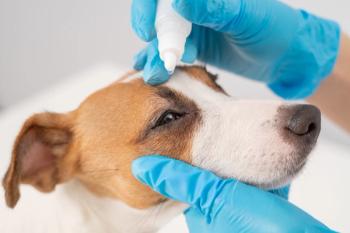
KC Animal Health Corridor ready for next push
More than 700 people from 130 animal-health companies, veterinary organizations meet to discuss the future
Kansas City, Mo. — It started with a half-day event covering national threats to biosecurity and ended with an investment forum that brought together companies and venture capitalists. And it was all punctuated by a Homecoming event, in conjunction with CVC in Kansas City, that reeled in close to 750 people representing 130 animal-health organizations and companies.
All of these initiatives are designed to spur innovation and investment in animal health, says the new chair of the KC Animal Health Corridor George Heidgerken, who recently spoke with DVM Newsmagazine at CVC in Kansas City.
That's what it is all about, Heidgerken adds, creating a fertile ground to help animal-health companies make discoveries, bring them to market and train the next generation of veterinarians and animal-health employees. The KC Animal Health Corridor is attempting to bridge all stakeholders in animal health from companies to veterinary schools to government to investment capitalists.
Heidgerken, who also serves as president and CEO of Boehringer Ingelheim Vetmedica, says that he is amazed at how far the corridor has come in just five years.
"It's also nice to have the corridor recognized by the government." Heidgerken is referring to a resolution passing the U.S. House of Representatives last year recognizing the Animal Health Corridor as "the national center of the animal-health industry."
The activities, however, spread far beyond the region from Manhattan, Kansas to Columbia, Missouri into metropolitan Kansas City. These collaborations all lay a foundation in areas of disease research and investment of novel new animal-health products. The plan is to plant seeds of succession to maintain a highly skilled animal-health workforce for the future.
Highlights this year include the start of construction of the Department of Homeland Security's National Bio and Agro-Defense Facility (NBAF). (See the story on the next page.) Another activity was the second Animal Health Investment Forum that brought together scientists, companies and investment capitalists for presentations. The Kansas Bioscience Authority is considering the feasability of creating an innovation center to investigate animal-health problems that one single company or institution couldn't do alone. Examples, Heidgerken says, might be to further study antibiotic resistance or impacts of zoonotic diseases. "Some of these bigger issues really can be tackled in an institute that has funding and cooperation with industry," he says.
"We have the clear understanding that education and workforce is the power that will sustain our businesses in the area. If we have a rich workforce, great schools, great cooperation in academic institutions and federal institutions like NBAF, then we are going to have a strong workforce. The progress we have made over the last five years has been very enriching," Heidgerken adds.
Newsletter
From exam room tips to practice management insights, get trusted veterinary news delivered straight to your inbox—subscribe to dvm360.




